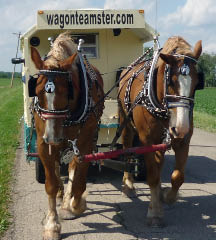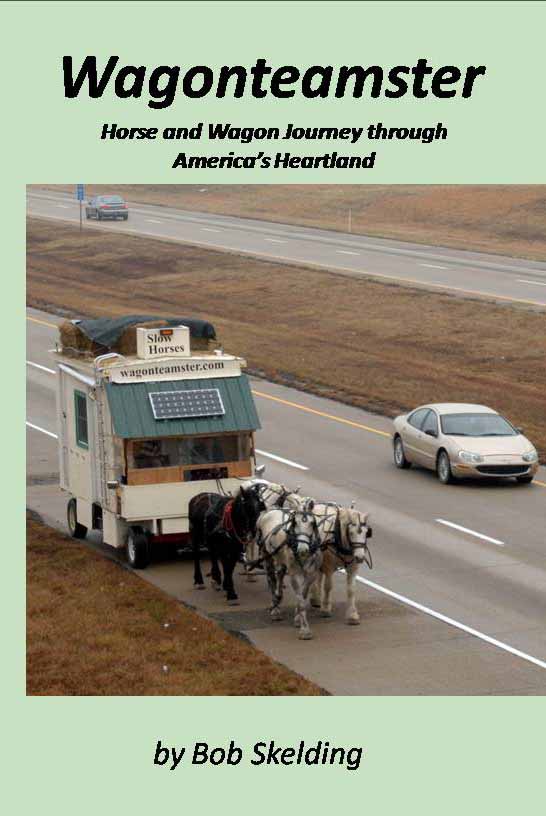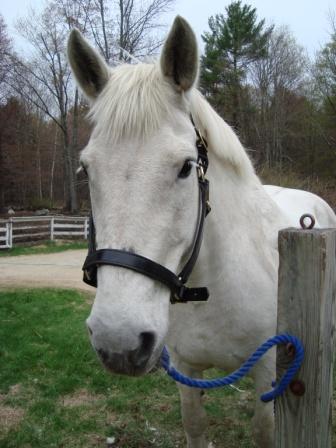|
|
|
|
||||||||||||||||||||||||||||||||
|
|
|
Wagonteamster |
|||||||||||||||||||||||||||||||||||
 |
|||||||||||||||||||||||||||||||||||
|
WAGONTEAMSTER .COM |
|||||||||||||||||||||||||||||||||||
|
4-7-12, Rio Grande River Valley, CO - Today was a day of horseback rides, wildlife and incredible scenery. A man feels really blessed to bear witness to this taste of the western wilderness. My first ride was down the west bank of the river. I first took Doc over the hills and then down some arroyos to the river. I first attempted to walk down the first dry streambed a mile downriver, but found my way blocked by a fence put up by the BLM, supposedly to protect the riparian environment from grazing animals. Like many government projects, this one was a waste of money as the river bottom continues to be heavily grazed. A half mile further on, I found an arroyo with the river fence knocked down, so we made it to the water. |
|||||||||||||||||||||||||||||||||||
 |
|||||||||||||||||||||||||||||||||||
|
A herd of wild horses on the mesa. This place is truly majestic. |
|||||||||||||||||||||||||||||||||||
|
Not long after reaching the river, I spied a coyote on the opposite bank of the river. With the water between us, he was completely unconcerned with my presence. He was definitely on the prowl for food. His first stop was at an old horse carcass, a winter-killed domestic horse that had been left to fend for itself in the river canyon. After wandering around the riverbank for a while, he dug something out of the bank and carried it off. At the time I had my video camera out, do I didn’t manage to get a still shot. |
|||||||||||||||||||||||||||||||||||
 |
|||||||||||||||||||||||||||||||||||
|
At about 40 pounds weight and a nice looking coat, this coyote looked well fed and content. |
|||||||||||||||||||||||||||||||||||
|
The valley was in drought for most of the previous year. Even along the river bank, there was very little new grass growth. The wild horses seemed to have wintered well. They’re a little thin, but they know where to rustle up the best feed so they’ve done well. Several years ago, a resident of one of the valley towns dumped several dozen horses in the valley. He doesn’t have a grazing permit; rather, he just free-grazes his stock. With a few exceptions, these horses haven’t fared as well. In a two mile stretch of river, I found the remains of two of his horses that died during the winter. |
|||||||||||||||||||||||||||||||||||
 |
|||||||||||||||||||||||||||||||||||
|
This Bay was one of the domestic horses that didn’t make the winter. While sad, even in death, the remains are not wasted. What nature takes in one way, it provides in others. |
|||||||||||||||||||||||||||||||||||
|
The whole scene played out by the coyote this morning was considerably better than watching the nature channel. On TV, you’re a little detached from reality. This was the ‘Real McCoy’! |
|||||||||||||||||||||||||||||||||||
 |
|||||||||||||||||||||||||||||||||||
|
After this shot, I swapped to video. I didn’t get the whole sequence of him digging a critter out of the riverbank, as it’s really tough to get good video when I’m sitting on the back of a herd-sour horse. When I put the video together, you’re going to hear a lot of - “Doc, stand; whoa”. |
|||||||||||||||||||||||||||||||||||
|
After riding back to camp along the river, I took a short break before making use of the ford, located just upstream, to cross to the east bank. If you remember, two nights ago, a herd of wild horses were kind enough to show me where the river can be crossed. |
|||||||||||||||||||||||||||||||||||
 |
|||||||||||||||||||||||||||||||||||
|
This is the view of Wagonteamster Camp (opposite bank - left side of picture) from the East Bank of the River. The ford starts in the little cove in the foreground and extends at a slight angle to the opposite bank. While the river is deep in places, the water barely got above Doc’s knees. |
|||||||||||||||||||||||||||||||||||
|
Not long after crossing over, I spied a herd of eleven wild horses on the mesa to my northeast. I started out riding directly to them, but they started getting nervous when I was about 600 yards away. At that time the herd stallion started doing some mock charges (of only a few feet) and the herd started getting unsettled. To settle them down, I changed direction and walked parallel with the herd, while slowly closing the distance. |
|||||||||||||||||||||||||||||||||||
 |
|||||||||||||||||||||||||||||||||||
|
Ten of the eleven horses in the herd. A sorrel hung out near the rear and didn’t appear to be a full member of the herd. He was probably a young stallion that hung out near them but wasn’t allowed too close. I call these horses ‘associate members’. The herd stallion is the third horse from the left, with a white snippet on his nose. I think the lead mare was the one shown in the far right of this photo. |
|||||||||||||||||||||||||||||||||||
|
They got more tolerant of my presence, but at about 250 yards, they had enough. In the shot below, the lead mare (second horse back) has the other mares bunched up and is moving them off. |
|||||||||||||||||||||||||||||||||||
 |
|||||||||||||||||||||||||||||||||||
|
This is the core group of mares and the stallion. Some older members and associate members of the herd were not herded, but were left to follow along. |
|||||||||||||||||||||||||||||||||||
|
Doc and I spent over an hour moving just outside the comfort zone of this herd. At that time, it was the only herd present in the 5000 acre bowl formed by the west side of the Brownie Hills. The piece of private land they usually occupy is about 250,000 acres, so I have no doubt there are dozens of individual herds that occupy this land. On the first night we arrived here, I saw two large mare herds and two smaller herds of bachelor stallions. The herd I observed today was not present on our first night in the valley. |
|||||||||||||||||||||||||||||||||||
 |
|||||||||||||||||||||||||||||||||||
|
Before heading back to camp, this was my parting view of this horse herd. As you can see, they’re much more relaxed now that I’m about 800 yards away. By the way these horses act to a mounted man, in the past they’ve been chased on horseback. If the water was warmer, I would walk across the river so I could get closer on foot. But, with 35 degree river water, I’ll let Doc do the river ford and I’ll watch the horses from horseback! |
|||||||||||||||||||||||||||||||||||
|
Wow, what a day! |
|||||||||||||||||||||||||||||||||||
 |
|||||||||||||||||||||||||||||||||||
|
The Rio Grande River, looking north from the wilderness, to the heart of the valley. The sandy soil with Rabbit Brush and close cropped clumps of buffalo grass is typical of the terrain found on the mesa in the bowl of the Brownie Hills. The mesa was interspersed with large arroyos and hidden lowland, so there could very well have been several herds of horses in the area that I never saw. |
|||||||||||||||||||||||||||||||||||


